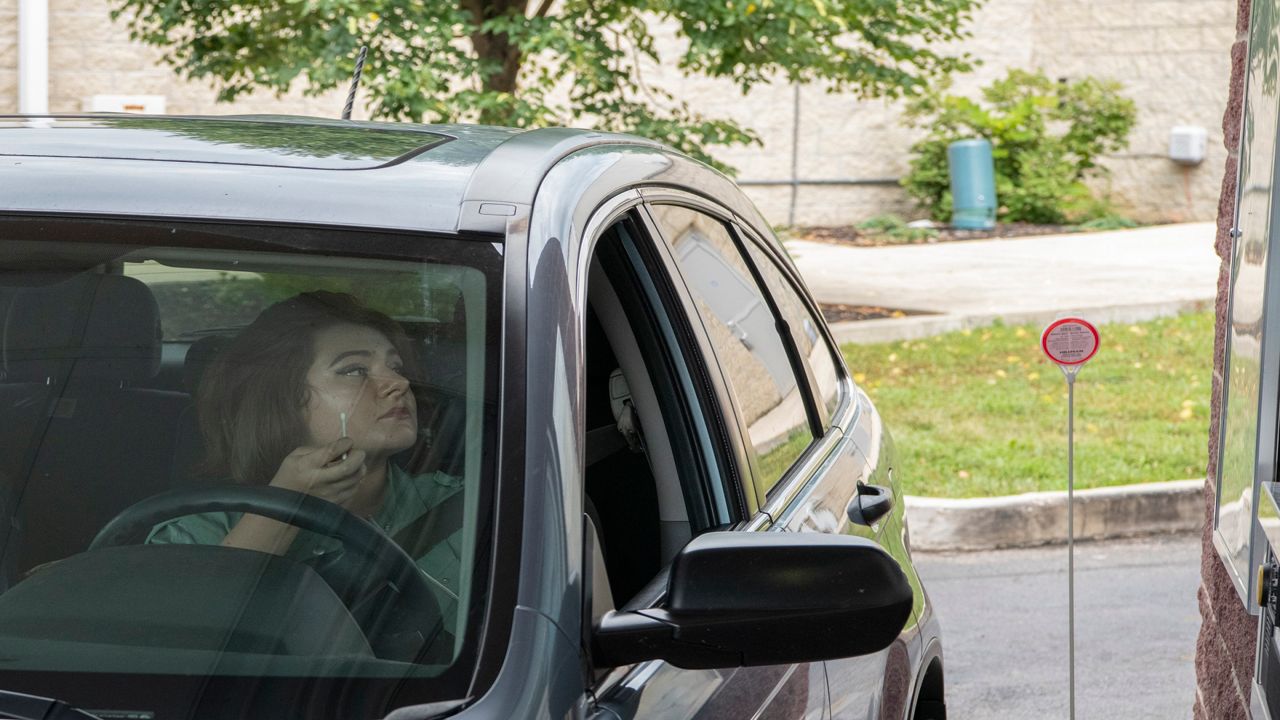COLUMBUS, Ohio — There is just one week from the start of padded practices on high school football fields across the state of Ohio. And a new set of guidelines for all fall sports has just been released by the OHSAA. But contact sports still haven’t been cleared by the Ohio Department of Health and Governor Mike DeWine.
The OHSAA released specific recommendations for seven fall sports, all of which expect to begin practices on Aug. 1. But all eyes are on football — and if it can happen, safely.
Beau Rugg is the Football Administrator for the OHSAA. He said although a formal plan has been submitted, they are preparing for any outcome.
He said the Ohio Department of Health is aware of the timetable facing High School athletics, as well as the plan OHSAA has in place to resume competition. But essentially the fate of the fall sports season is in the hands of the Health Department.
“The numbers aren’t good in the state of Ohio, and if they say we just can’t get there, we’re just going to have to pivot and do some different things,” Rugg said.
Rugg said all options are still on the table, including moving all contact sports to the spring. But he said right now, this plan gives them the best practices and guidelines to play sports in the fall.
“I have full faith in our schools that they’re going to want to do best practices, because they’re gonna want to keep people safe,” Rugg said.
Inside the new recommendations, pre-participation daily screenings will be required — which includes a temperature check and symptoms assessment.
There are also many sanitization, practice, travel, and preventative measures intended to keep players safe.
The full list of recommendations can be found here.
From the coaches’ perspective, they are confident that a season can and will happen. Cincinnati Turpin Head Coach Kent McCullough said it’s what we all need to get back to normal.
“We need some normalcy,” he said. “We need some type of getting back to school, playing sports, doing other things. Whatever the governor wants, we’re going to jump through the hoops and do them.”
His program, along with more than 700 other schools, turned in a 38-page COVID-19 recommendations guide from the Ohio High School Football Coaches Association. McCullough said he trusts the plan and expects it to work.
“When you’re the head coach of a program, you want the best for your kids and the safety of your kids is your number one priority, and that’s the bottom line,” he said.
But one of the biggest areas of concern not in the plan for a return to play is testing. Currently, there are no guidelines in place for testing done by schools. Rather, it is up to the student to assess their own personal situation.
“Something that you do is probably going to prompt you to be tested,” Rugg said. “For the most part when we get into the season, that something is going to be one of three things: symptoms, exposure to something, or you’re on a contact tracer list.”
But that method leaves open the possibility that an asymptomatic player could cause major problems for entire teams. So what could happen if a player tests positive during competition?
“If a team has a player that tests positive and has to quarantine for two weeks, then those games are gonna be no-contests,” Rugg said. “And they could also end up, if that’s tournament time, vacating their line.”
Another subject of interest revolves around fans and if they can attend games. Financially speaking, it’s an important topic of discussion because having no fans in the stands could be catastrophic for budgets.
“For us, who puts on tournaments, 80 percent of our revenue is for ticket sales,” Rugg said. “And 60 percent of that is football. So chew on that for a while and think, what does that do?”
Rugg does see fans at games this fall, but in a reduced capacity.
“Right now I do,” he said. “If we go forward, I think there will be fans. Do I think there will be limits? Yes.”
Ultimately, Rugg said OHSAA is trying their best to have a season because the positive effects from team and individual sports, band, and cheer, is invaluable for students and helps shape their lives.
But he can’t give a definitive probability of what to expect at this point.
“I can’t give you a definitive if it’s 50/50 or not, but I think there’s a lot of people hoping,” Rugg said.
The OHSAA expects to hear back from the Ohio Department of Health sometime in the next few days, and certainly before the official start of practice on Aug. 1.




